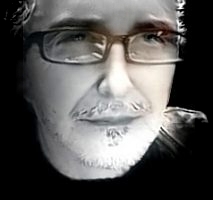
Artist
Originally from France, I attended all my schooling there. I studied in Paris at a higher school of Architecture.
I work and live in Montreal, Quebec (Canada).
THE DIGITAL ART IN QUESTION.
Technological arts terminology has always been extremely fluid like the technology employed which is constantly changing. What is now known as digital art has changed its name several times since its inception: in the 1970s we spoke of "computer art" or "computer art", then "art. multimedia”.
The term “digital art” as we currently understand itcan be used generically to refer to all types of images produced through the computer, placing it tools at the heart of the work's production process.
This is above all definable by its technical aspect, digital technologies contributing to produce an original aesthetic.
The polymorphous practice of digital art is made up of a set of heterogeneous artistic practices resulting from computer science(net art, software art, interactive installations, generative art) falling within the field of contemporary art by incorporating a production specifically linked to new media.
However, in this wide range of practices that digital art covers, beyond the purely technical aspect that brings them together, two major positions can be identified.
The first relates digital art to a transposition, even a reproduction of existing forms and techniques - such as digital photography, digital video, Digital Painting. Even if digital can make its mark,there is an attempt to imitate the existing, to erase, almost, the presence of digital.
The second envisions digital art as a place to create new forms, one or more new media - interactive art, real-time art, net art, multimedia art or new media. Digital technology allows the creation of a new form of art which, even if it can evoke or consist of existing forms, has very marked specificities.
There is also a more specific practice of digital art - namely generative art - understood as a new art form in its own right.
Generative art consists of using systems such as algorithms, in order to generate shapes or movements, based on rules defined by the artist and containing random elements.